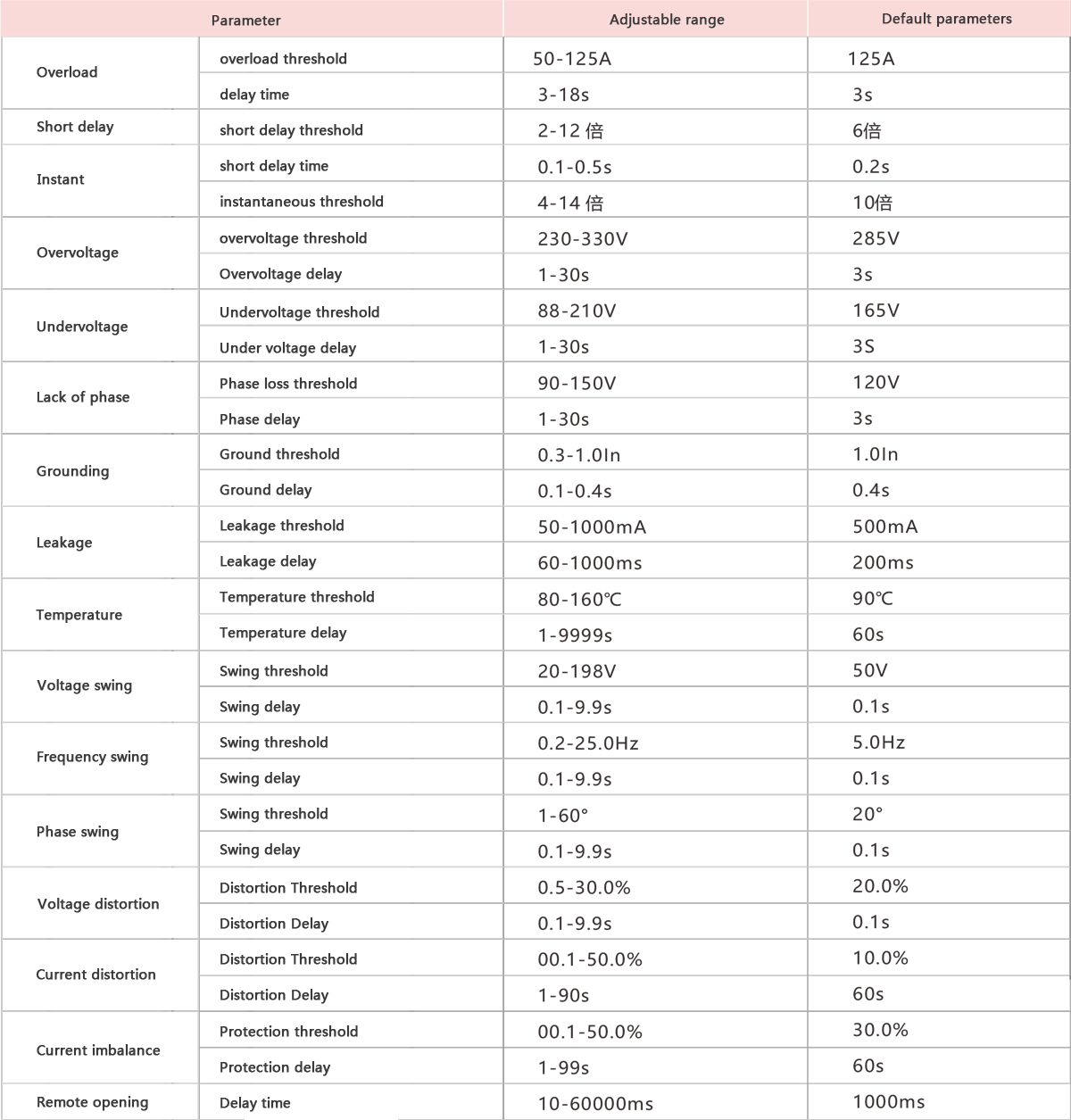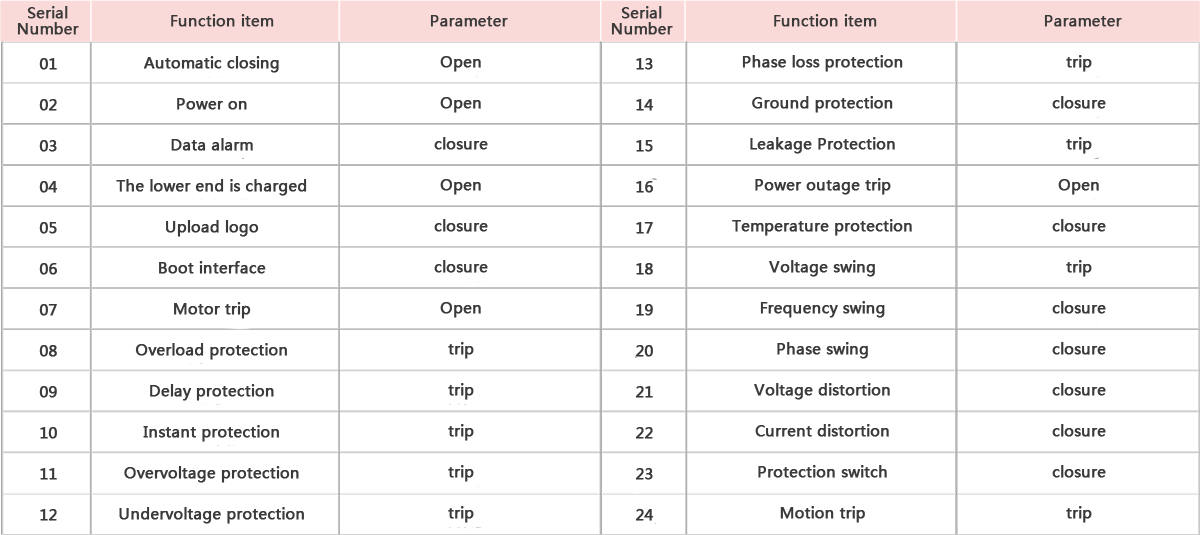Number of concerns:99times
Product Type:Power Distribution
Shelf time:2024-12-18
Product description:The GSM lift wireless intercom call system product is the fifth generation of our company's products, the machine room with wireless GSM extensions to talk to the management centre, no wiring to reduce the daily use of maintenance costs, to provide a comprehensive intercom call solution for the management centre; adopt
Tel:400-879-0955
>Product Overview
CZM3LZ series distributed photovoltaic protection switch (hereinafter referred to as circuit breaker), using residual current reclosing plastic case circuit breaker as the main body, adding PV-specific protection functions, HPLC or HPLC dual-mode communication functions, power quality monitoring functions and accurate metering and other power IoT functions. For ease of description, hereinafter referred to as circuit breakers. Circuit breakers for photovoltaic power systems connected to the low-voltage grid, mainly containing the following functions:
a) Islanding protection: in the event of a grid blackout, the connection of the PV generation system to the low-voltage distribution network is cut off without relying on the islanding protection of the inverter itself;
b) Overload protection, short-circuit protection: whether on the PV power generation side or on the low-voltage grid side out of a short circuit, the circuit breaker cuts off the grid connection when overloaded, playing a role in protecting the stability of the system;
c) Power quality monitoring: analysis of grid-connected voltage and current harmonics, power quality assessment and provision of data basis for assessment of power generation quality;
d) Measurement function: Measure power, voltage, current and frequency to provide data support for power supply and load response for the whole station area.
The circuit breaker can be mounted vertically (i.e. vertically) or horizontally (i.e. horizontally).
The products comply with the standards.
GB/T 14048.1-2012《Low-voltage switchgear and controlgear Part 1: General Provisions
GB/T14048.2-2020《Low-voltage switchgear and controlgear Part 2:Circuit breakers》.
GB/T17701-2008 "Circuit Breakers for Equipment" .
GB/Z22202-2008 "Reliability Test Methods for Residual Current Actuated Circuit Breakers for Household and Similar Uses".
JB/T10494-2005 "Reliability Test Methods for Residual Current Actuated Circuit Breakers for Household and Similar Applications".
JB/T8979-2006 "Residual current operated circuit breakers with or without overload protection)
>Model number and meaning
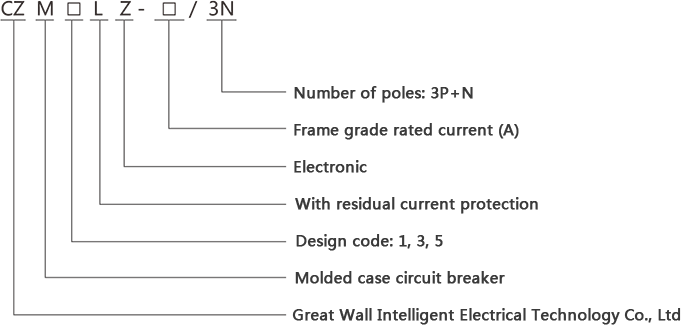
>Normal working conditions
●The working temperature shall be -25 °C to +55 °C. If the ambient temperature exceeds +55 °C or is lower than -25 °C, the limit working temperature shall be -40 °C to +70 °C according to the agreement between the manufacturer and the user.
●Transport and storage temperatures Transport and storage temperatures of -40 °C to +70 °C are desirable. Circuit breakers that are subjected to extreme temperatures and not operated should not be subjected to irreversible damage and when placed under normal conditions the circuit breakers should operate normally as specified.
●The relative humidity of the air should not exceed 50% at a temperature of +40°C. Higher relative humidity may be permitted at lower temperatures, for example at 20°C. Special measures should be taken for occasional condensation due to temperature changes.
● The altitude of the installation site should not exceed 2000m
●Note: For electrical appliances used at altitudes above 2000 m, the cooling effect of air and the reduction in dielectric strength need to be taken into account. For electrical equipment intended for operation under the above conditions use a derating according to the agreement between the manufacturer and the user
●No more than 5 times the geomagnetic field in any direction.
●Suitable for environments with a pollution level 3.
●The housing shall have a protection class of IP20, except for the terminal block。
>Product features
●High-performance 32-bit ARM microprocessor for real-time signal processing and intelligent control;
●LCD Chinese display, friendly human-machine interface, easy to operate.
●Residual current (leakage) protection, with online adjustment of the residual current level and reclosing function;
●Real-time monitoring and tracking of line residual currents, automatic adjustment of gears to ensure the commissioning rate and reliability of the product.
●Long-delay, short-delay and instantaneous three-stage protection with electronic decoupling, independent of supply voltage.
●High breaking capacity to ensure the reliability of the short circuit protection.
●Overvoltage protection, undervoltage protection, phase loss protection;
●Real-time display of line residual current, three-phase supply voltage and load current;
●Protection functions and parameters can be set online to modify the type of trip (residual current, blocking, overload, undervoltage, overvoltage, phase loss) identified, displayed and can be stored, queried and deleted;
●With communication functions for telematics, telemetry, remote control and telemodulation;
●Infrared communication function, external lightning protection module can be added.
●Distributed PV protection
PV-specific protection functions, HPLC or HPLC dual-mode communication functions, power quality monitoring functions and accurate metering and other power IoT functions
a) Islanding protection: In the event of a grid blackout, the PV system is disconnected from the low voltage distribution network without relying on the islanding protection of the inverter itself.
b) Overload protection, short-circuit protection: Whether there is a short circuit on the PV power generation side or on the low-voltage grid side, the circuit breaker cuts off the network connection when there is an overload, playing a role in protecting the stability of the system;
c) Power quality monitoring: analysis of grid-connected voltage and current harmonics, evaluation of power quality and provision of data basis for assessment of power generation quality.
d) Measurement function: Measure power, voltage, current and frequency to provide data support for power supply and load response in the whole station area.
●Measurements:
Accuracy of voltage measurement
Voltage value | Percentage error limits (quoted errors) |
| 0.7Un≤U≤1.3Un | ±0.5% |
| 0.35Un≤U<0.7Un | ±1% |
b) Accuracy of current measurement (three-phase voltage balance, rated voltage)
Accuracy of current measurement
Voltage value | Percentage error limits (quoted errors) |
| 0.05In≤U≤1.2In | ±0.5% |
c) Active power (3-phase balanced load, rated voltage)
Accuracy of voltage measurement
| Voltage value | Power Factor | Percentage error limits (quoted errors) |
| 0.05In≤1≤1.2In | 1.0 | ±1% |
d) Active power
Accuracy of reactive power measurement
| Voltage value | Power Factor | Percentage error limits (quoted errors) |
| 0.05In≤1≤1.2In | 0.0 | ±2% |
e) Forward and reverse power accumulation
Accuracy of forward and reverse energy accumulation
| Voltage value | Power Factor | Percentage error limits (quoted errors) |
| 0.05In≤1≤1.2In | 1.0 | ±1% |
f) Harmonics: voltage harmonics measurement 2 to 19 times, current harmonics measurement 2 to 40 times, measurement accuracy ±2%
g) Frequency: measurement range 45~55Hz, measurement error ±0.01Hz
h) Temperature: ±2°C
● Expanded functions: with topology recognition, carrier communication (HPLC), Bluetooth, infrared, photovoltaic and anti-islanding, LORA communication, IoT functions, special wave recognition, to be specified when ordering.
>Controller key performance indicators
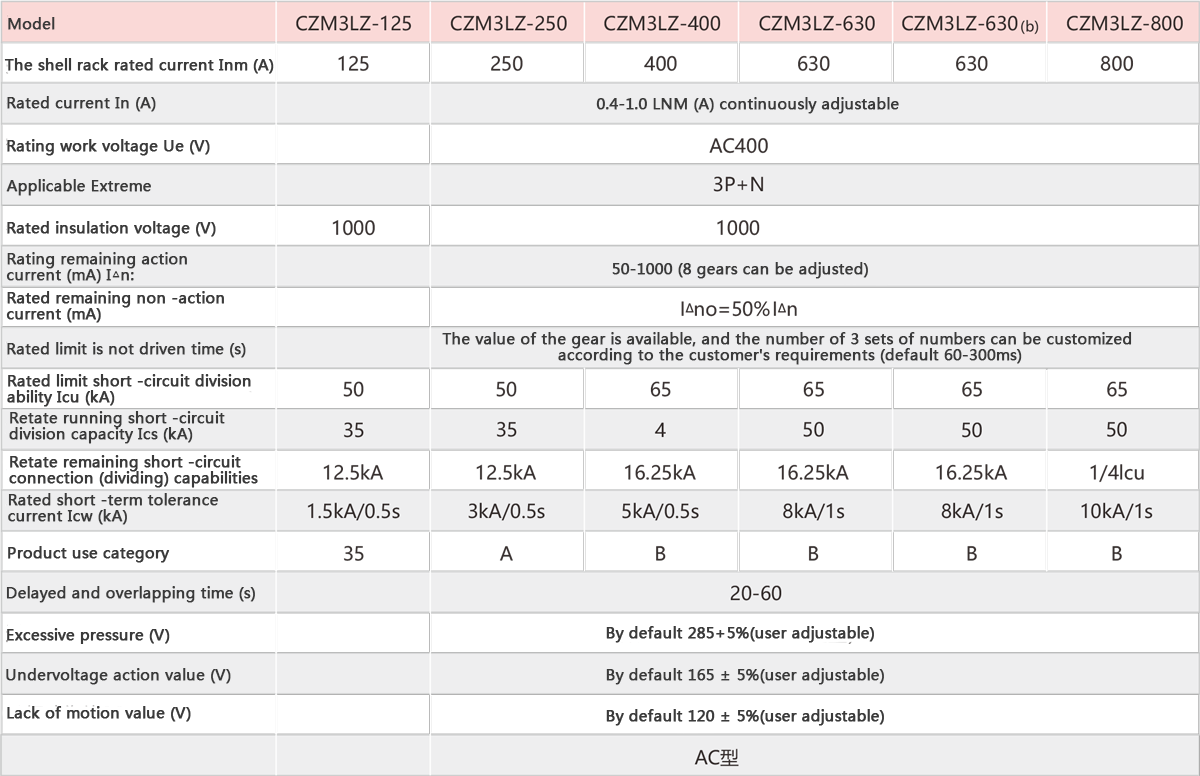
>Actuation performance of the decoupler
Overload protection characteristics (inverse time action)

Calculation of the long overload delay time: T1 = (6Ir1/I)² x Tr1 (Ir1: rated current, I: is the actual applied current, Tr1: is the time factor)
Instantaneous overcurrent decoupler current setting value

>External terminals

>Installation and external dimensions
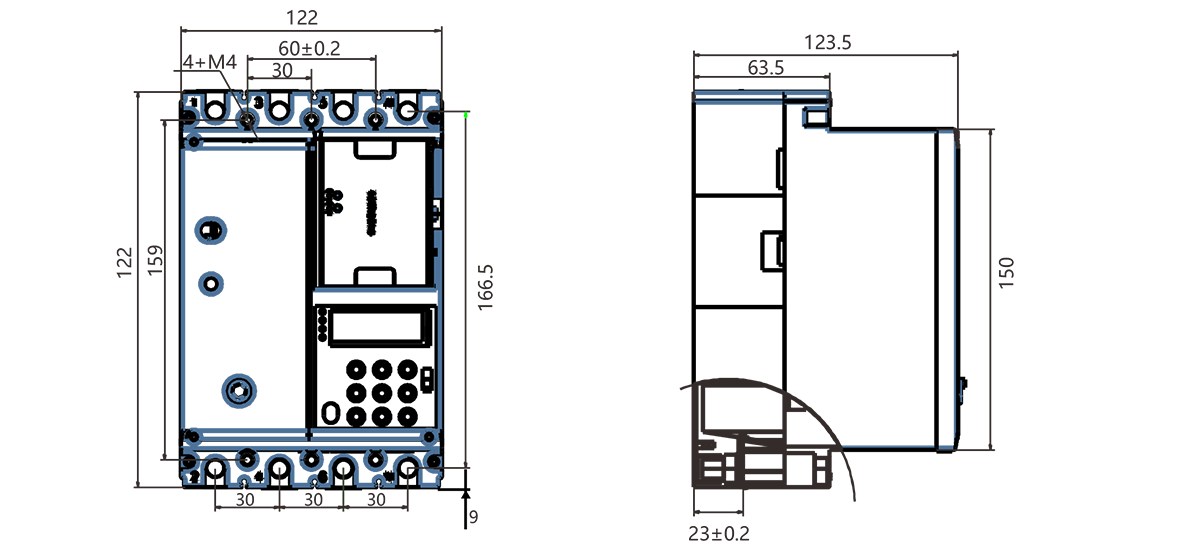
>Parameter setting criteria
